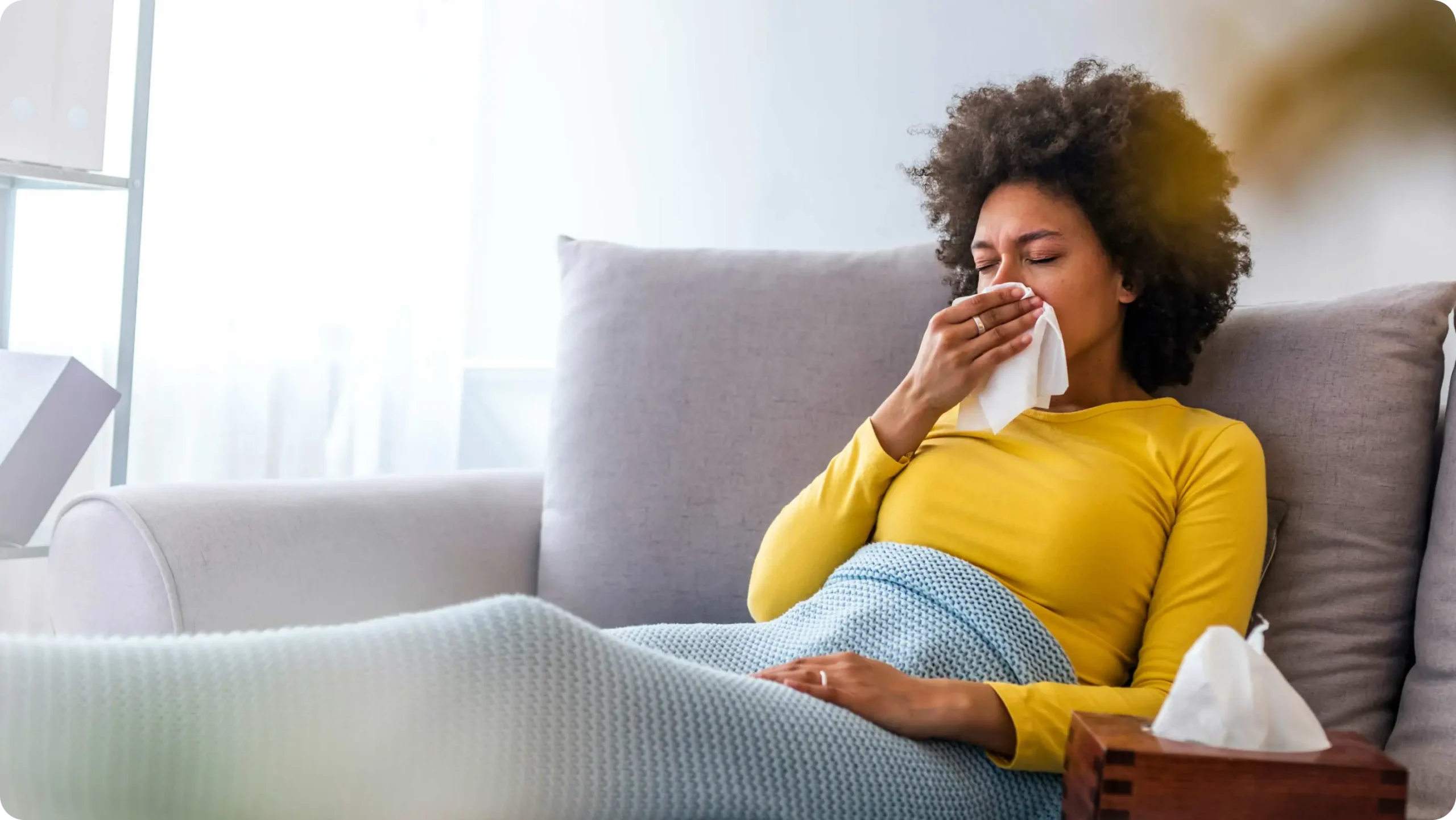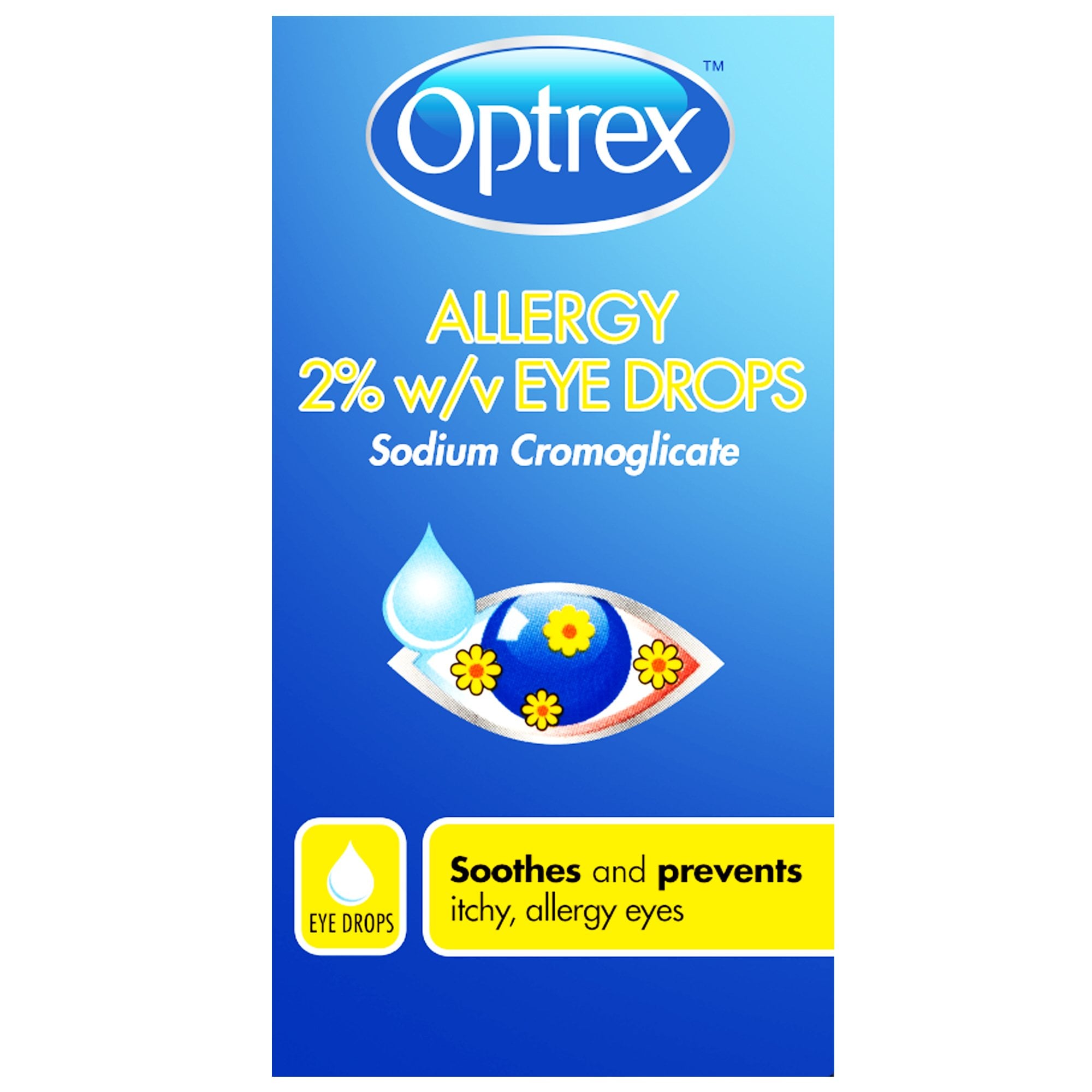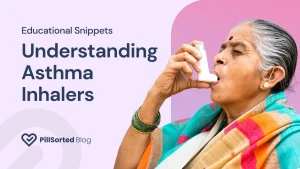Tips to Relieve Hay Fever

April showers bring May flowers. But if you’re like the 10% to 30% of the world’s population who are prone to allergies, they also bring hay fever! While it may not be possible to completely prevent or cure hay fever, the good news is there are many things you can do to treat your allergy symptoms. In this article, we’ll explore those options and give you tips to relieve your hay fever symptoms that really work.
In this post:
- What is hay fever?
- Hay fever symptoms
- Food Pollen Syndrome & Cross Sensitivity
- Hay fever causes
- Hay fever preventions
- Hay fever Dos & Don’ts
- Hay fever medicines & pharmacy toolkit
What is hay fever?
Hay fever (allergic rhinitis) is an allergic reaction that occurs when your immune system mistakenly identifies harmless substances as a threat. These are usually allergens such as pollen, dust, moulds, or animal dander. This results in an inflammatory response that causes symptoms you are probably all too familiar with already—runny nose, itchy eyes, and congestion.
Unlike the common cold, these symptoms can last for several weeks or even months. To be diagnosed with hay fever, you must have: 2 nasal symptoms for at least 1 hour daily for a minimum of 12 weeks. Otherwise, it is probably just a stubborn cold.
Hay fever symptoms
Your hay fever symptoms can vary in severity and duration, but they most typically include:
- Runny nose and sneezing
- Congestion
- Itchy or puffy eyes
- Postnasal drip
- Fatigue
Food Pollen Syndrome, cross sensitivity
If you are prone to hay fever, you should be aware of food pollen syndrome, or oral allergy syndrome (OAS). This is a cross-sensitivity to foods, such as certain raw fruits, vegetables, or nuts. Tose foods contain proteins that are similar to those found in tree and grass pollen. So they can trigger hay fever symptoms when you eat them.
The reverse can also occur. Tree and grass pollen can trigger food allergy symptoms in people with food allergies. Cook your fruits or vegetables to help reduce or eliminate your risk of an allergic reaction. If you suspect you have food pollen syndrome, it is important to speak with a pharmacist.
What causes hay fever?
Hay fever is caused by an allergic reaction to environmental allergens, such as pollen, dust, animal dander, and mould spores. Especially if pollen counts are high, defined as 9.7-12 grams of pollen per cubic meter. When your immune system encounters these substances, it produces an antibody called immunoglobulin E (IgE). That triggers the release of chemicals, such as histamine, that cause inflammation in your nasal passages, eyes, and throat.
Certain risk factors may increase your likelihood of developing hay fever, or make your existing symptoms worse, including:
- Family history. If your parents or siblings have hay fever or other allergies, you may be more likely to develop them as well.
- Age. Hay fever is most common in children and young adults, although it can appear (or disappear) at any age.
- Pollutants. If you live in an area with air pollution, you may be more likely to develop hay fever. Pollutants such as particular matter (PM) and nitrogen dioxide (NO2) can irritate your nasal passages. And make them more sensitive to allergens.
- Exposure to allergens. Regular exposure to allergens, such as pollen, dust, or animal dander. Or if you work in certain industries, such as farming, forestry, or landscaping.
- Asthma: If you have asthma, you are more likely to develop hay fever, and vice versa. This is because both conditions are caused by an overactive immune system triggering inflammation and exacerbating symptoms.
- Smoking. Smoking or exposure to second-hand smoke may damage your respiratory system. And can cause inflammation in the lungs and nasal passages, which can make them more sensitive to allergens like pollen.
- Stress. When you are stressed, your body releases cortisol and adrenaline, hormones which can suppress the immune system. And make you less able to fight off allergens.
Tips to relieve hay fever
If you are prone to hay fever, the best thing you can do is:
- Know your triggers. And avoid them by staying inside when pollen counts are high.
- Keep your body and home clean.
- Apply Vaseline or a barrier ointment around the edge of each nostril. This is a great trick for helping your body block pollen and other allergens from entering your body.
- Stay hydrated all day long. Drink plenty of liquids.
Hay fever Do’s & Don’ts
| Do | Don’t |
|---|---|
| Stay indoors | Don’t spend too much time outdoors |
| Close windows | Don’t bring in flowers |
| Use HEPA air filters | Don’t cut the grass |
| Clean your home and counter tops frequently | Don’t smoke or be around smoke |
| Wash your hair and clothes frequently | Don’t hang clothes to dry outside |
| Put Vaseline on the edge of your nostrils | Don’t gorget to take your allergy medication |
| Drink lots of water | Don’t ignore your allergy symptoms |
Hay fever medicines
Once you have hay fever, over-the-counter allergy medications should be enough to calm down your symptoms. But if your hay fever symptoms get worse or they are stopping you from working or living a normal, active life, be sure to talk to a pharmacist or healthcare professional.
Here are some common hay fever treatment options:
- Antihistamines. These medications relieve symptoms such as sneezing, itching, and runny nose by blocking the effects of histamine. They come in several different forms—including tablets, capsules, liquids, syrups, creams, lotions, gels, eye drops and nasal sprays. And are usually divided into two main groups:
- Antihistamines that can make you feel sleepy, including chlorphenamine (Piriton), cinnarizine, diphenhydramine, hydroxyzine and promethazine. These are better to take at night if your symptoms are preventing you from getting the sleep you need.
- Non-drowsy antihistamines that are less likely to make you feel sleepy, including acrivastine, cetirizine, fexofenadine and loratadine. Non-drowsy antihistamines are generally the best option. They can be quick-acting or long-lasting.
Non-drowsy antihistamines are generally the best option
- Steroid nasal sprays. These are nasal sprays that contain steroid medication to reduce inflammation in your nasal passages.
- Decongestants: These medications can help relieve nasal congestion and reduce swelling in the nasal passages. They can be taken as pills, nasal sprays, or drops.
- Eye drops: Eye drops can help relieve symptoms of itchy, watery eyes caused by hay fever.
- Prescription medications. If over-the-counter medications are not effective, your doctor may prescribe stronger prescription medications.
- Immunotherapy. Also known as ‘allergy shots’, this treatment involves receiving injections of small amounts of allergens over time. The goal is to train your immune system to be less sensitive to these allergens. And reduce the severity of your hay fever symptoms in the future.


NeilMed Sinus Rinse – 120 Sachets
The NeilMed Sinus Rinse Kit is your solution for effective nasal irrigation and sinus relief.

Benadryl 10 mg One a Day – 7 Tablets
Benadryl Allergy One A Day tablets provide effective relief from hay fever and allergy symptoms, helping you stay comfortable during allergy flare-ups.

Sudafed Blocked Nose Nasal Spray – 15ml
Sudafed Blocked Nose Nasal Spray is a convenient daily remedy for symptoms caused by allergies that affect your nose.

Beconase Hayfever Relief Nasal Spray – 100 Sprays
Beconase Hayfever Relief Nasal Spray is a fast-acting, non-drowsy nasal spray designed to provide relief from the symptoms of hayfever and other allergies.

Optrex Allergy Eye Drops 2% w/v – 10ml
Optrex Allergy Eye Drops provide relief for eye allergy symptoms by addressing the root cause and calming irritated eyes. These drops help alleviate redness, itchiness, and watery eyes that may occur during an allergic reaction or hay fever. The portable dropper bottle allows for easy application wherever you are, making it an ideal solution for those who do not want their allergies to hinder their daily activities. The active ingredient in Optrex Allergy Eye Drops is sodium cromoglicate
Main takeaways
- Hay fever is caused by an allergic reaction to environmental allergens, such as pollen, dust, animal dander, mould spores, and pollution.
- Hay fever can occur at any time of the year, not just in the spring.
- The best way to avoid hay fever is to know your triggers and avoid contact with them.
- Over-the-counter allergy medications, such as non-drowsy antihistamines, should be enough to calm down most of your hay fever symptoms
References
Pawankar, R., et al (2012). World Health Organization. White Book on Allergy 2011-2012 Executive Summary.
Hellings, P., et al. (2017). EAACI position paper. Non-allergic rhinitis: Position paper of the European Academy of Allergy and Clinical Immunology
Takizawa, H., (2011). Korean J Intern Med. Impact of Air Pollution on Allergic Diseases
PillSorted
PillSorted is a full service pharmacy that delivers trusted pharmacy products, over-the counter medications, and the prescriptions your doctor recommends, directly to your door. Your PillSorted pharmacist is happy to answer your questions about weight loss and potential treatment options at 0333 4050380 or help@pillsorted.com.

All third-party trademarks (including logos and icons) referenced by PillSorted remain the property of their respective owners. Unless specifically identified as such, PillSorted’s use of third party trademarks does not indicate or imply any relationship, sponsorship or endorsement between PillSorted and the owners of these trademarks.























